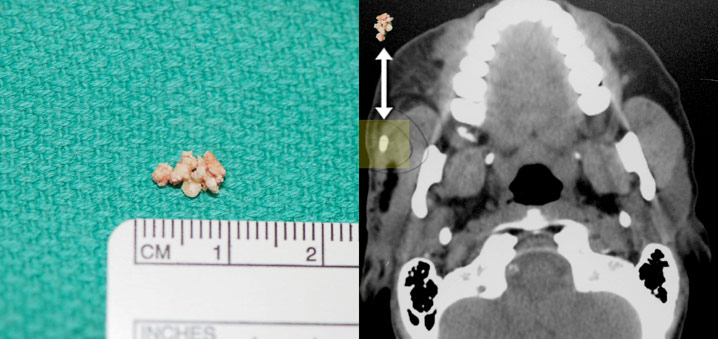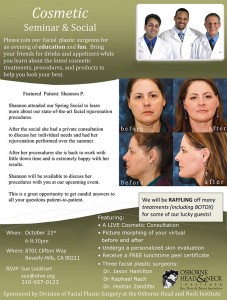- India Medical Mission 2018 - November 1, 2018
- Sleep Disorders: Sleep Apnea and Upper Stimulation Therapy - August 25, 2015
- The Naked Vocalist Podcast Featuring Dr. Reena Gupta - May 27, 2015
- New Therapy for Sleep Apnea – First Sleep Pacemaker placed in California at Osborne Head and Neck Institute. - December 12, 2014
- Boxer’s Ear: Can your ear explode? - December 12, 2014
- Nose Picking (Rhinotillexis) and Septal Perforations: Why I should stop picking my nose…? - November 24, 2014
- Deviated Septum and Septal Perforation - July 28, 2014
- Hereditary Hemorrhagic Telangiectasia: Nasal Septal Perforation Repair - June 25, 2014
- Dr. Mantle recognized at the Beverly Hills Medical Science Academy Awards - May 8, 2014
- Commonly Misdiagnosed Pathologies: Arteriovenous Malformations - April 9, 2014
Can I avoid surgery after a failed sialendoscopy?
Question: I have a long history of salivary gland stones and conventional treatments have become ineffective. Recently I developed a large stone in my parotid gland that was unsuccessfully treated with sialendoscopy. I have been told that surgery is now the most suitable option due to the size of the stone. I want to avoid a parotidectomy surgery and its potential complications. Are there any alternatives to surgery after a failed sialendoscopy?
Answer: Surgery can be avoided after failed sialendoscopy by seeking treatment from a skilled salivary gland specialist. Sialendoscopy is a meticulous and precise procedure that is highly dependent on operator skill. Because of this, it is highly recommended that the procedure be performed by a physician that has specialized in removing stones of all sizes from the salivary glands.
Sialendoscopy is the gold standard treatment for persistent salivary gland stones. As a cutting edge and non-invasive technique, meticulous operator precision is a large factor in the outcome of this procedure. By using modern techniques and specialized equipment, sialendoscopy specialists can typically treat stones of any size that other providers have failed to remove. Through sialendoscopy, salivary gland specialists can help patients with persistent salivary gland stones avoid the potential dangers of invasive surgical approaches to treatment.

Traditional surgical techniques for salivary stone removal should be avoided due to the potential complications and dysfunction caused. The invasiveness of surgery typically disrupts delicate tissues and structures that surround the salivary gland in question. This typically includes the facial nerve, which if damaged during surgery can result in facial paralysis, changes in facial sensation, loss of taste, and disfigurement. In addition, surgical removal of the salivary gland can result in decreased salivary function and dry mouth. The aforementioned concerns have highlighted the need for modified sialendoscopy techniques to address salivary gland stones of all sizes.
Dr. Ryan Osborne, director of the Osborne Head and Neck Institute, has pioneered the use of minimally invasive sialendoscopy in treating persistent salivary gland stones. While other providers have been limited in their applications of sialendoscopy to smaller sized stones, Dr. Osborne has developed his own techniques and instrumentation for the treatment of stones of any size. Dr. Osborne has received international acclaim for his work as well as his advancement of sialendoscopy.
To learn more about your options after a failed sialendoscopy, please contact the Osborne Head and Neck Institute.
Key Facts:
- Surgery can be avoided after failed sialendoscopy by seeking treatment from a skilled salivary gland specialist.
- Sialendoscopy is a meticulous and precise procedure that is highly dependent on operator skill.
- It is highly recommended that sialendoscopy be performed by a physician that has specialized in removing stones of all sizes from the salivary glands.
- By using modern techniques and specialized equipment, sialendoscopy specialists can typically treat stones of any size that other providers have failed to remove.
- Traditional surgical techniques for salivary stone removal should be avoided due to the potential complications and dysfunction caused.
- Dr. Ryan Osborne, director of the Osborne Head and Neck Institute, has pioneered the use of minimally invasive sialendoscopy in treating persistent salivary gland stones.
- While other providers have been limited in their applications of sialendoscopy to smaller sized salivary gland stones, Dr. Osborne has developed his own techniques and instrumentation for the treatment of stones of any size.



